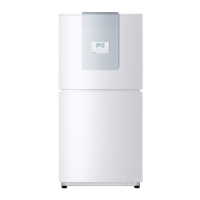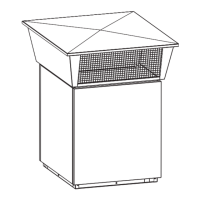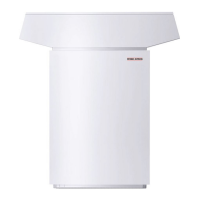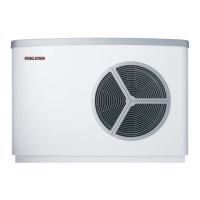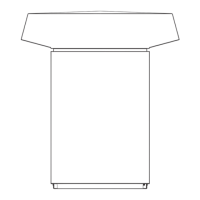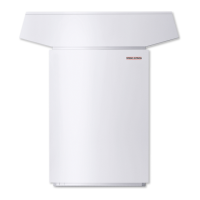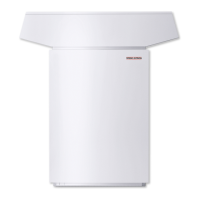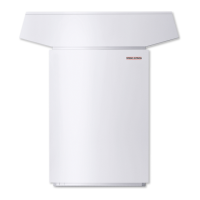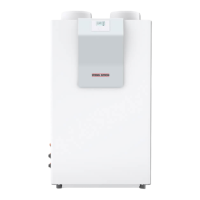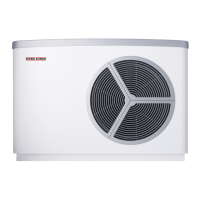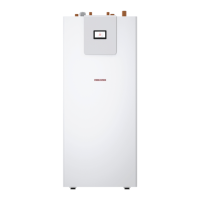www.stiebel-eltron.com 13
Making the push-fit connection
The connector must be in its relaxed position before the pipe is
inserted. In this position, there is a small gap between the screw
cap and main body.
26_03_01_0693
3
1
2
4
1 Retainer
2 Screw cap
3 Gap between screw cap and main body
4 Main body
26_03_01_0693
Pipe Ø 28 mm
Depth of insertion A 44mm
!
Material losses
Pipe ends must be deburred.
Always use a pipe cutter to trim pipes.
Push the pipe past the O-ring into the push-fit connector
until it reaches the prescribed insertion depth.
Tighten the screw cap by hand against main body as far as it
will go. This secures the push-fit connection.
Undoing the push-fit connection
If the push-fit connectors later need to be undone, proceed as
follows:
Turn the screw cap anti-clockwise until there is a narrow gap
of approx. 2mm. Press the retainer back with your fingers
and hold on to it.
Pull out the inserted pipe.
26_03_01_0693
10.5 Oxygen diffusion
!
Material losses
Avoid open vented heating systems and underfloor
heating systems with plastic pipes that are permeable
to oxygen.
In underfloor heating systems with plastic pipes that are per-
meable to oxygen and in open vented heating systems, oxygen
diffusion may lead to corrosion on the steel components of the
heating system (e.g. on the indirect coil of the DHW cylinder, on
buffer cylinders, steel radiators or steel pipes).
With heating systems that are permeable to oxygen, separate
the heating system between the heating circuit and the buff-
er cylinder.
!
Material losses
The products of corrosion (e.g. rusty sludge) can set-
tle in the heating system components, which may re-
sult in a lower output or fault shutdowns due to reduced
cross-sections.
10.6 Filling the heating system
Carry out a fill water analysis before filling the system. This analy-
sis may, for example, be requested from the relevant water supply
utility.
!
Material losses
To avoid damage as a result of scaling, it may be neces-
sary to soften or desalinate the fill water. The fill water
limits specified in chapter "Specification/ Data table"
must always be observed.
Recheck these limits 8-12weeks after commission-
ing, every time the system is topped up and during
the annual service.
Note
With a conductivity >1000μS/cm, desalination treatment
is recommended in order to avoid corrosion.
Note
If you treat the fill water with inhibitors or additives, the
same limits apply as for desalination.
Note
Suitable appliances for water softening and desalinating,
as well as for filling and flushing heating systems, can be
obtained from trade suppliers.
Fill the heating system via the drain (see chapter "Specifica-
tion/ Dimensions and connections").
After filling the heating system, check the connections for
leaks.
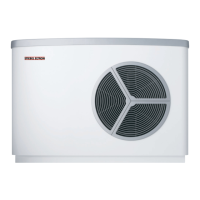
